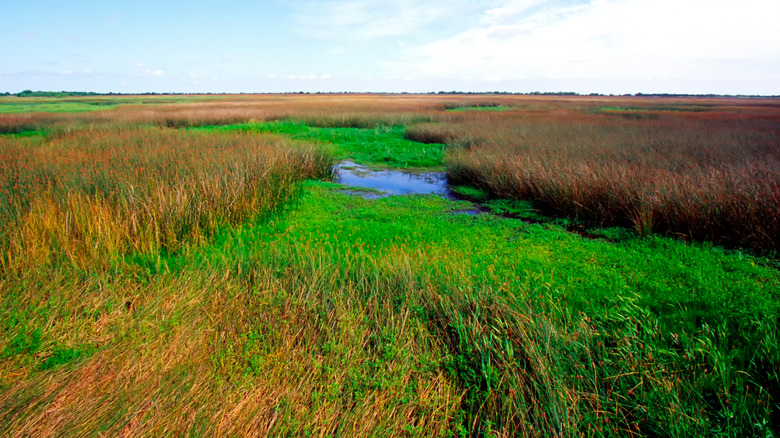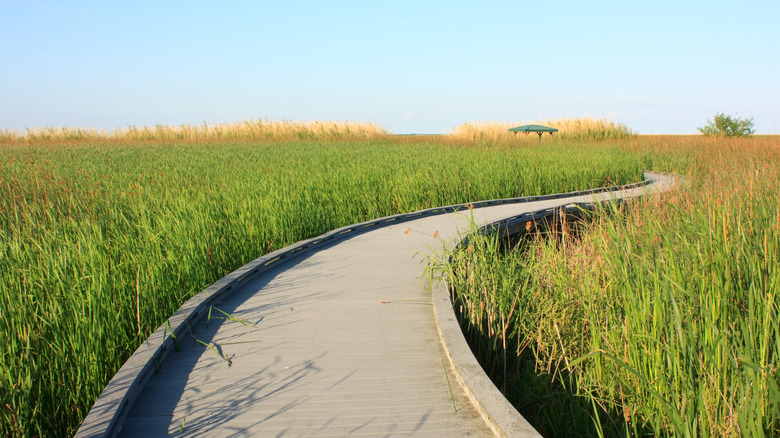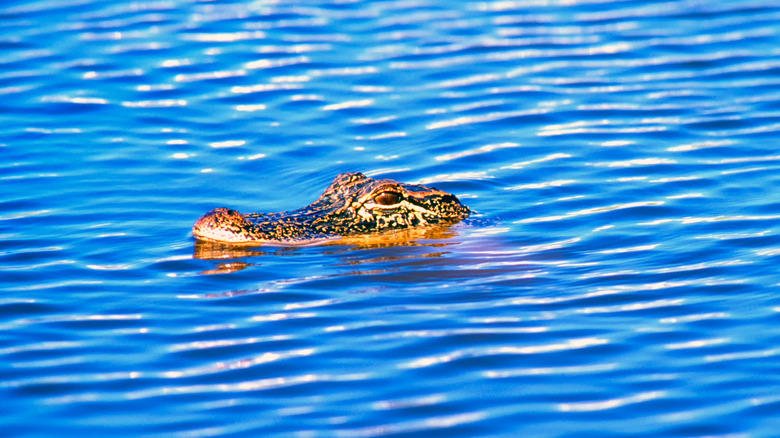The Gulf Of Mexico's Largest Coastal Marsh Refuge Is An Unmatched Haven For Wildlife Watching And Recreation
Sabine National Wildlife Refuge is a defining feature of Louisiana's coastal landscape. Located 8 miles south of Hackberry in southwest Louisiana, just east of the Texas border, the refuge streches over 125,000 acres along the northern edge of the Gulf of Mexico. It is the largest coastal marsh refuge in the National Wildlife Refuge System and a crucial habitat for both migratory and resident species. Sabine National Wildlife Refuge is accessible via State Highway 27, which is part of the Creole Nature Trail All-American Road, a designated scenic byway celebrated for its untouched wetlands and abundant wildlife. The nearest airport, Lake Charles Regional Airport, is situated in Lake Charles, a city known for its world-class beaches and shoreside casinos. Visitors arriving via the airport can reach the refuge in roughly 50 minutes by car, while those coming from a larger hub like Houston, Texas, should plan for a two-and-a-half-hour drive southeast.
The refuge protects a complex mix of brackish and freshwater marshes, tidal creeks, ponds, bayous, and mudflats. These diverse habitats support a wide range of plant and animal species, maintaining ecological stability in the region. In addition to its conservation role, the refuge also functions as a natural barrier against coastal storm surges, reducing flood risk to surrounding communities.
For your visit, pack essentials like insect repellent, water, and a lightweight hat, especially if you plan to be out during warmer months or on exposed trails. Visitors are encouraged to follow a "pack it in, pack it out" approach by bringing only what they need and taking everything with them when they leave. This simple step helps protect wildlife, maintain trails, and keep Sabine natural for future visitors.
Wander through wetlands and spot birds at Sabine National Wildlife Refuge
Known for its rich biodiversity, Sabine draws birders, photographers, and nature lovers year-round. The refuge is situated along the Mississippi Flyway, a major route for migratory birds in North America. During migration periods, large numbers of snow geese, warblers, ospreys, and orioles pass through or winter in the marsh. Year-round residents such as herons, egrets, and the colorful roseate spoonbill are also common sights in the wetland areas. Early morning and late afternoon are considered the best times for spotting wildlife, especially during peak bird migration seasons — spring (mid-April to mid-May) and fall (August through October).
One of the best places to view wildlife is the Wetland Walkway, a 1.5-mile loop trail built on an elevated boardwalk that stretches into the marsh. The walkway features an observation tower, rest shelters, and interpretive signs that identify local species and explain the region's ecology. The trail is wheelchair-accessible and free to enter, making it an easygoing option for a quiet solo walk or a slow-paced family outing.
Another option for casual walking and wildlife observation is the Blue Goose Trail, a short gravel path located at the refuge's headquarters area. It offers a shorter, easy-to-navigate route with informational panels and the chance to spot birds and smaller wetland creatures. The trail is suitable for all ages and mobility levels, with benches and clear viewpoints along the way. Those looking to explore more of the Gulf Coast's wetland ecosystems might also consider a side trip to the Barataria Preserve, a scenic, wildlife-filled swamp with accessible boardwalks.
Fish, crab, or explore Sabine National Wildlife Refuge by boat
In addition to walking trails, Sabine National Wildlife Refuge supports a range of recreational activities, including fishing, crabbing, and paddling. Its interconnected network of canals, bayous, and shallow water bodies provides habitat for both freshwater and saltwater species. Depending on the season and location, anglers may catch redfish, largemouth bass, catfish, or flounder. Blue crabs are frequently harvested from canal banks using simple gear like handlines and drop nets.
Recreational fishing and crabbing are allowed from sunrise to sunset, and all participants must follow Louisiana state regulations. A valid fishing license is required. Small boats, kayaks, and canoes are allowed in many areas of the refuge, offering quiet access to its backwater habitats. Paddling gives you a chance to explore the quieter backwaters where the scenery is even more immersive.
Sabine National Wildlife Refuge is a day-use area with no camping or overnight facilities, but nearby communities like Holly Beach and others in Cameron Parish offer convenient lodging and RV options. Travelers can book a spot at Holly Beach Memories, an RV park located in the coastal community of Holly Beach, known for its white sand beach nicknamed "The Cajun Riviera." The park offers full hookups, concrete pavilions, and direct beach access, with nightly rates averaging around $65 on both weekdays and weekends.


